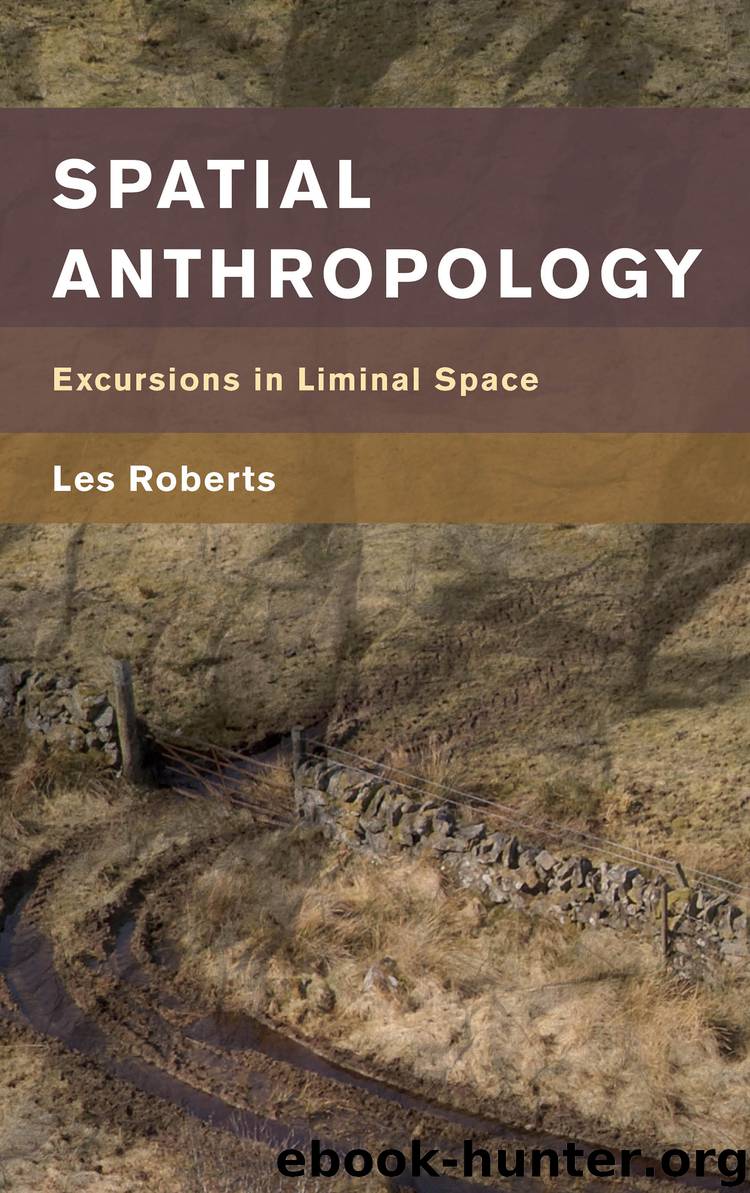Spatial Anthropology by Les Roberts

Author:Les Roberts [Roberts, Les]
Language: eng
Format: epub
Publisher: Book Network Int'l Limited trading as NBN International (NBNi)
Published: 2018-05-27T16:00:00+00:00
Figure 5.1 Screenshot of Google Earth map of Merseyside cinema locations, showing the location of the Tower Theatre in New Brighton on the Wirral.
Source: Google Earth, 14 December 2015, North Wirral and Liverpool, 53°25'54.65"N and 3°01'33.74"W (accessed 22 June 2017).
A tour of these sites is, therefore, something of a salvaging exercise; a dredging up of absent memoryscapes that offer no tangible waypoints by which to conjure an imaginary of place that bears traces of its ‘past pleasures’. New-build housing developments, a solicitors office, a football field – there is little that offers nostalgia a stable foothold. At least, as an entertainment venue, the Riverside leisure complex, where pleasure-seekers can go tenpin bowling, play a laser tag game, or gamble at the in-house casino, is closer in spirit to what preceded it ninety or so years previously in the shape of the Palace Theatre (which, from 1906 to its closure twenty years later, went variously by the name of the Gaiety, Palace Picture Playhouse, and Collins’ Palace Cinema). If anything, the most resonant lieux de mémoire are those found in the pages of The Silver Screens of Wirral. These are the spaces around which cinema-going memories cluster and where nostalgia is able to blossom (or where, for those too young to have their own well of memory to draw from, nostalgia is manufactured). But the urban landscape itself is far less accommodating. Nostalgia, from my reading of the memorial runes at least, was not an emotion that offered a one-way passage to a past that could be pinned down to a set of geo-spatial coordinates. The sense of nostalgia that seemed someway palpable at the time was wrapped up in concerns over the future development of New Brighton. Wistful reflection on its lost cinema heritage might very well find traction in an environment where loss and absence speak to a more diffuse sense of anxiety with respect to the town’s immediate fortunes. But, insofar as it could be registered at all, nostalgia seemed pegged to a future where what was currently still present had potentially been cast into absence, not a past that had already vanished. Regeneration plans that were being implemented would have far-reaching consequences for a town that, in 2009–2010, was in a state of transition, much like it was in the early 1970s when the Swan filmmakers bore witness to its rapid decline. The difference this time was that New Brighton’s transformational trajectory, economically at least, was towards a position where it would be able to attract and sustain inward investment, turning its fortunes around so that its status as a place of consumption and a leisure hotspot might potentially be restored.
When exploring the Tower Grounds on a previous visit to the resort I chatted with a local woman who was out walking her dog. Like many other residents she was worried about the impact of development plans that would transform the north-facing waterfront area. The developers were proposing to build a new Morrisons supermarket as
Download
This site does not store any files on its server. We only index and link to content provided by other sites. Please contact the content providers to delete copyright contents if any and email us, we'll remove relevant links or contents immediately.
Cecilia; Or, Memoirs of an Heiress — Volume 1 by Fanny Burney(32434)
Cecilia; Or, Memoirs of an Heiress — Volume 2 by Fanny Burney(31869)
Cecilia; Or, Memoirs of an Heiress — Volume 3 by Fanny Burney(31852)
The Great Music City by Andrea Baker(31335)
We're Going to Need More Wine by Gabrielle Union(18967)
All the Missing Girls by Megan Miranda(15564)
Pimp by Iceberg Slim(14389)
Bombshells: Glamour Girls of a Lifetime by Sullivan Steve(13972)
Talking to Strangers by Malcolm Gladwell(13222)
Norse Mythology by Gaiman Neil(13204)
Fifty Shades Freed by E L James(13157)
For the Love of Europe by Rick Steves(12938)
Mindhunter: Inside the FBI's Elite Serial Crime Unit by John E. Douglas & Mark Olshaker(9194)
Crazy Rich Asians by Kevin Kwan(9167)
The Lost Art of Listening by Michael P. Nichols(7403)
Enlightenment Now: The Case for Reason, Science, Humanism, and Progress by Steven Pinker(7228)
The Four Agreements by Don Miguel Ruiz(6628)
Bad Blood by John Carreyrou(6550)
Weapons of Math Destruction by Cathy O'Neil(6142)
